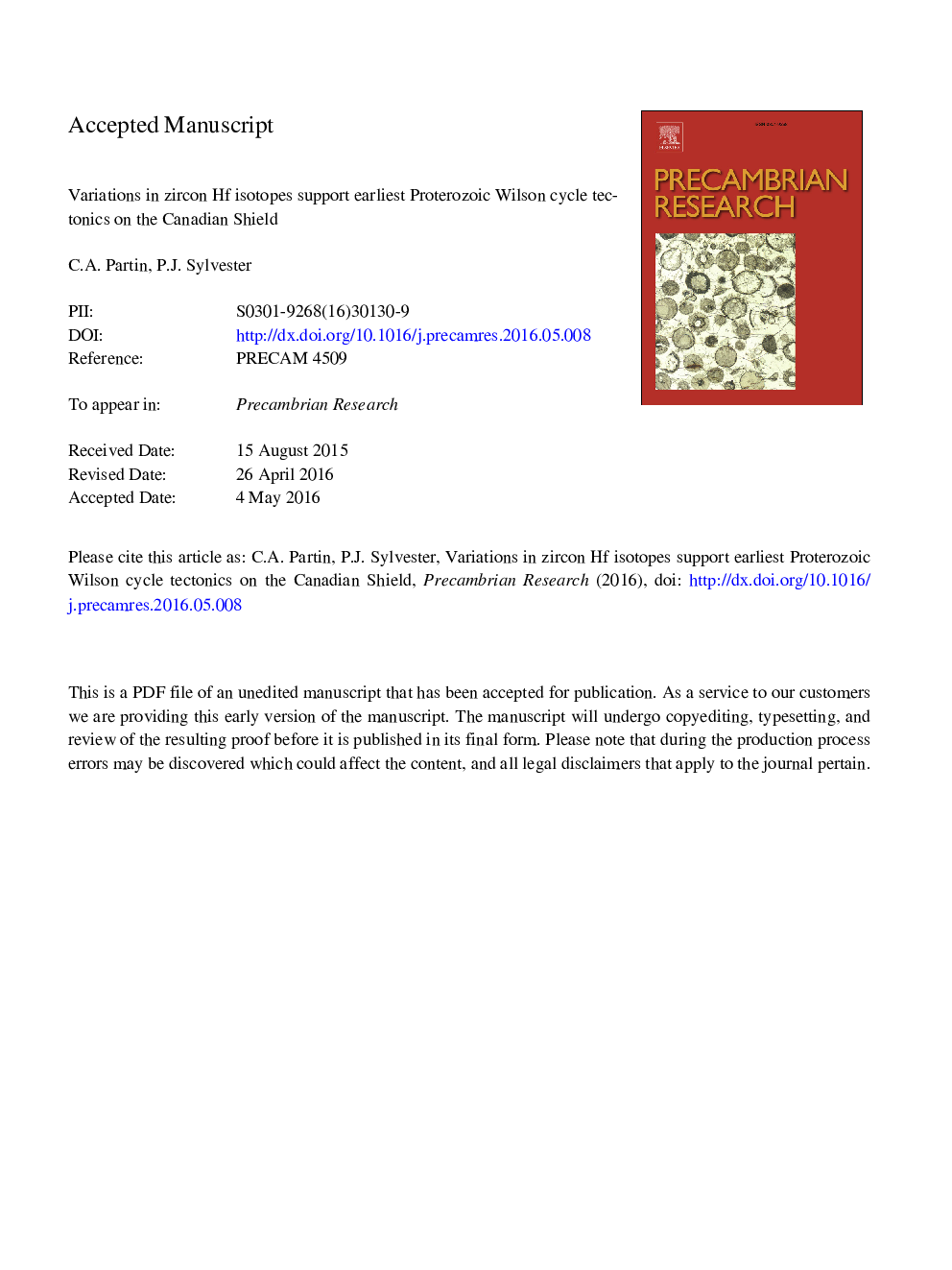| Article ID | Journal | Published Year | Pages | File Type |
|---|---|---|---|---|
| 6442196 | Precambrian Research | 2016 | 39 Pages |
Abstract
Sedimentary basins provide an archive of magmatic and tectonic events in their detrital zircon record, which can be dated and coupled with Hf isotopic data to reveal secular changes in the production of juvenile and evolved magmatism and track the history of orogenic events. The Rae craton, which forms a substantial portion of the northern Canadian Shield, experienced successive orogenic events along its margins during most of the Paleoproterozoic Era. Yet, some of these orogenic events are poorly defined and their details remain controversial. We present coupled detrital zircon U-Pb age and εHf data from Paleoproterozoic metasedimentary successions of the eastern Rae craton. The zircon preserve an archive of â¼600 million yr of magmatic and tectonic history on the Rae craton and its periphery. The U-Pb and Hf isotopic data indicate that zircon provenance was dominantly from the northern and western Rae craton, where magmatic and tectonic activity was focused during the â¼2.5 to 2.3 Ga Arrowsmith orogeny and the â¼2.0 to â¼1.93 Ga Taltson and Thelon events. Our detrital zircon dataset holds a more complete record of these Proterozoic orogenic events than is currently defined from known and dated crustal rocks on the Rae craton and shows that juvenile magmatism is more common than current models for either event suggest. Notably, an inverted U or horseshoe-shaped εHf array (â15.5 to +5.0) in our zircon dataset reflects a Wilson cycle that began in the earliest Paleoproterozoic on the Rae craton.
Related Topics
Physical Sciences and Engineering
Earth and Planetary Sciences
Geochemistry and Petrology
Authors
C.A. Partin, P.J. Sylvester,
